The Power Lines Came Tumbling Down
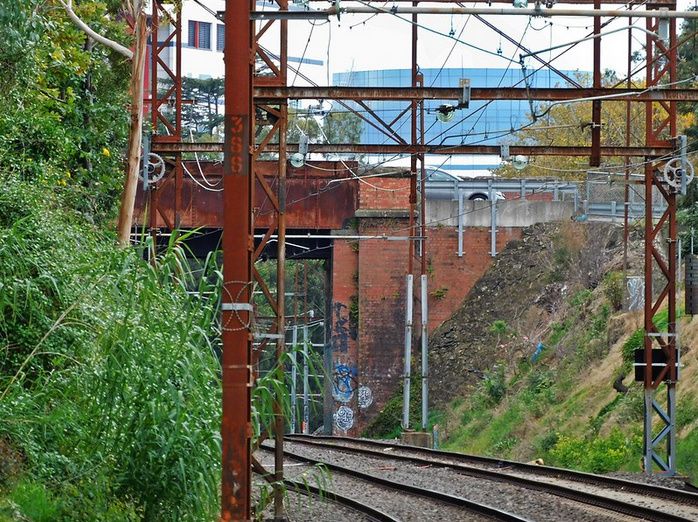
The original Heidelberg train line was the province of steam locomotives hauling goods waggons or passenger carriages.
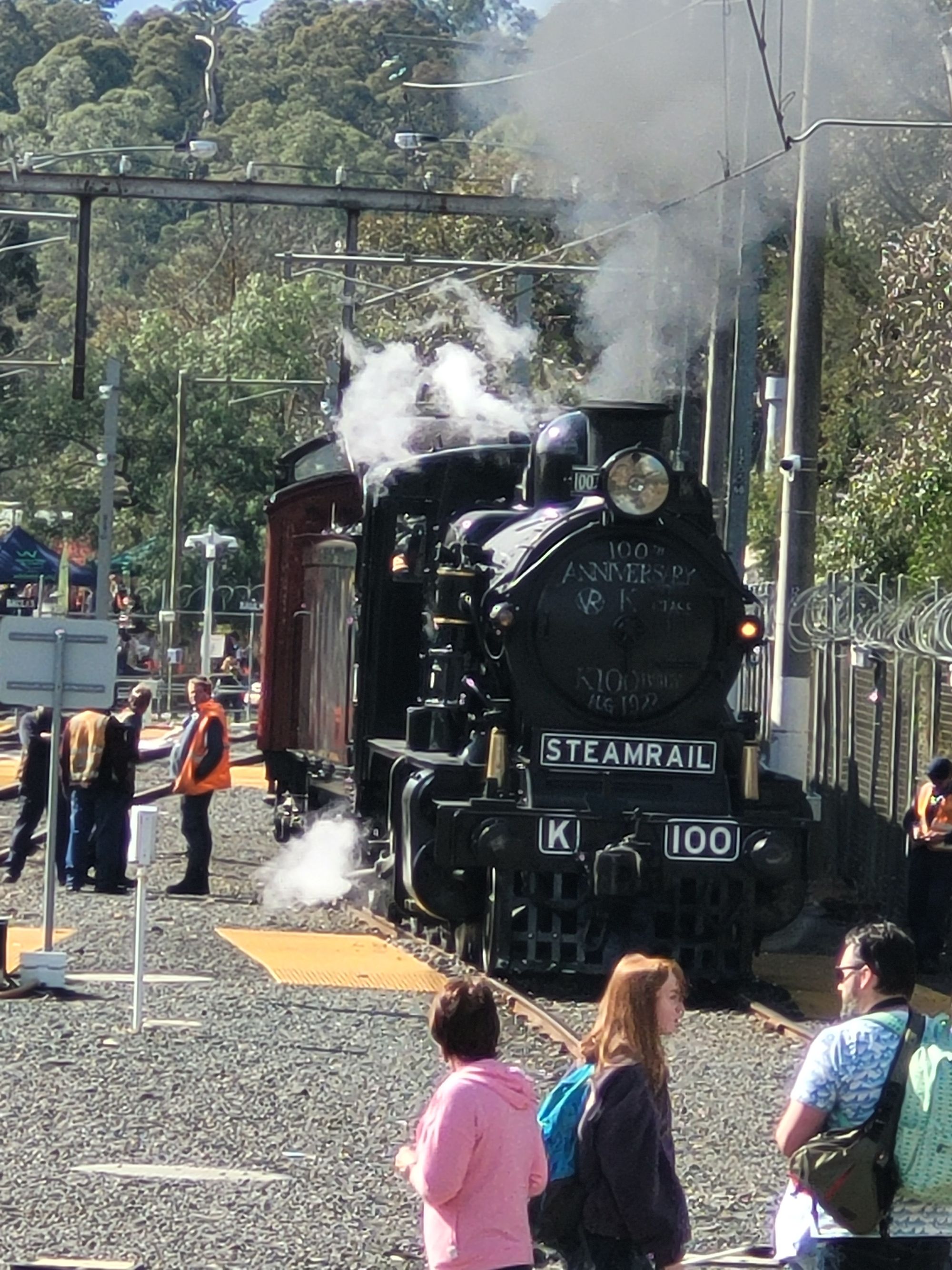
This form of power persisted until the line was electrified in 1921.
In April 1921, automatic signalling was implemented between Princes Bridge and Clifton Hill, and in July 1921 the line (from Princes Bridge) was electrified to Heidelberg, followed by electrification to Eltham in April 1923, and Hurstbridge in August 1926.
From then our passenger services city to Heidelberg were based on using a lead rail car, with an integral electric motor and driver, to drag along a coupled series of non-powered (but braked) carriages. (Change trains at Heidelberg for services farther out!)
No more fireman shovelling coal, no topping up the water for the boiler. No more steam, no more soot, no more romance.
Out goes the chuff, chuff, chuff chuff, chuff chuff chuff chuff! WHOOOEROO!
The age of electricity - clean power, less noise, progress, modernity.
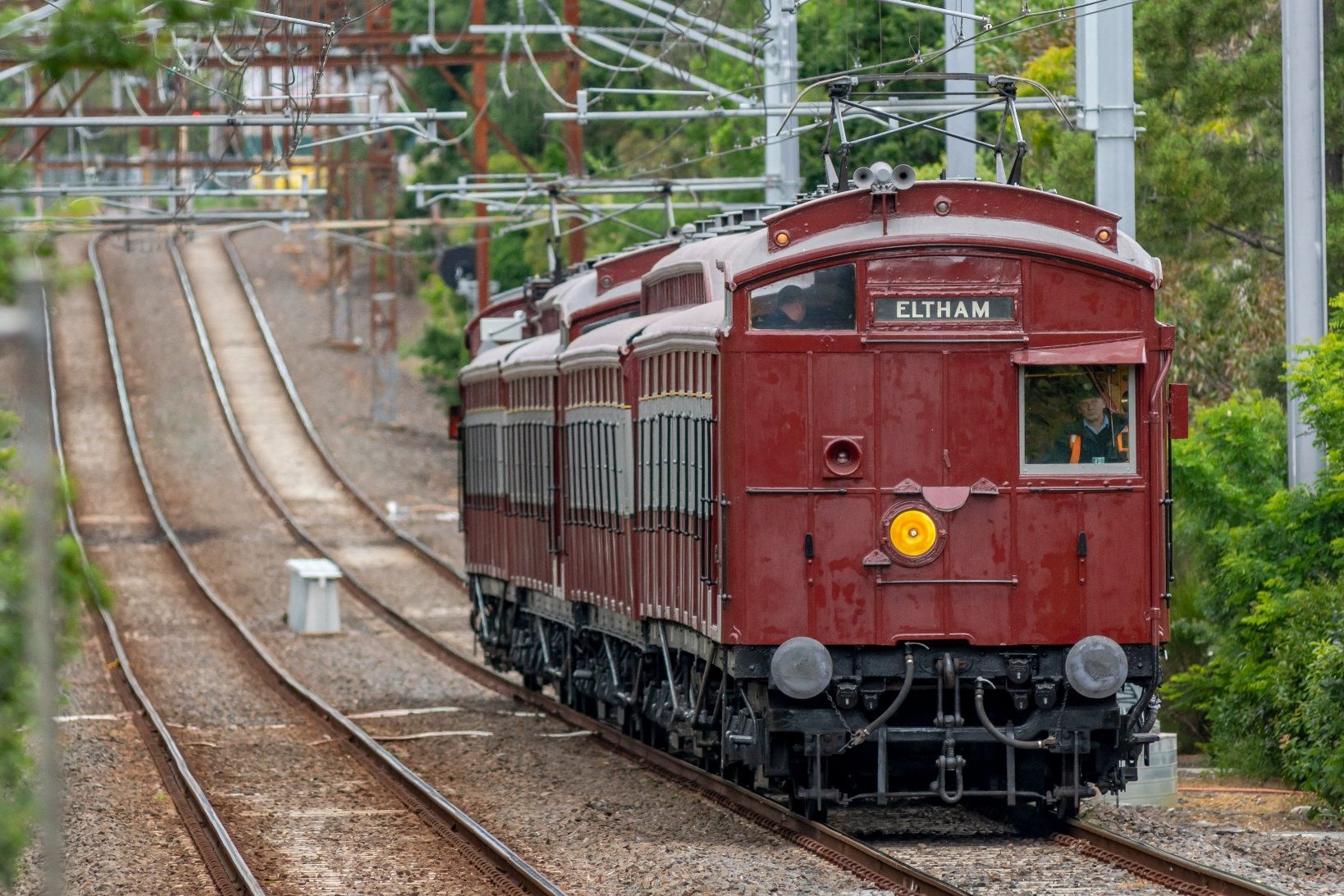
Remote coal fired boilers produced steam that turned the bladed turbines coupled to generators that produced electricity to dispatch to far-away homes, factories, offices and......... trains.
All good? Mostly.
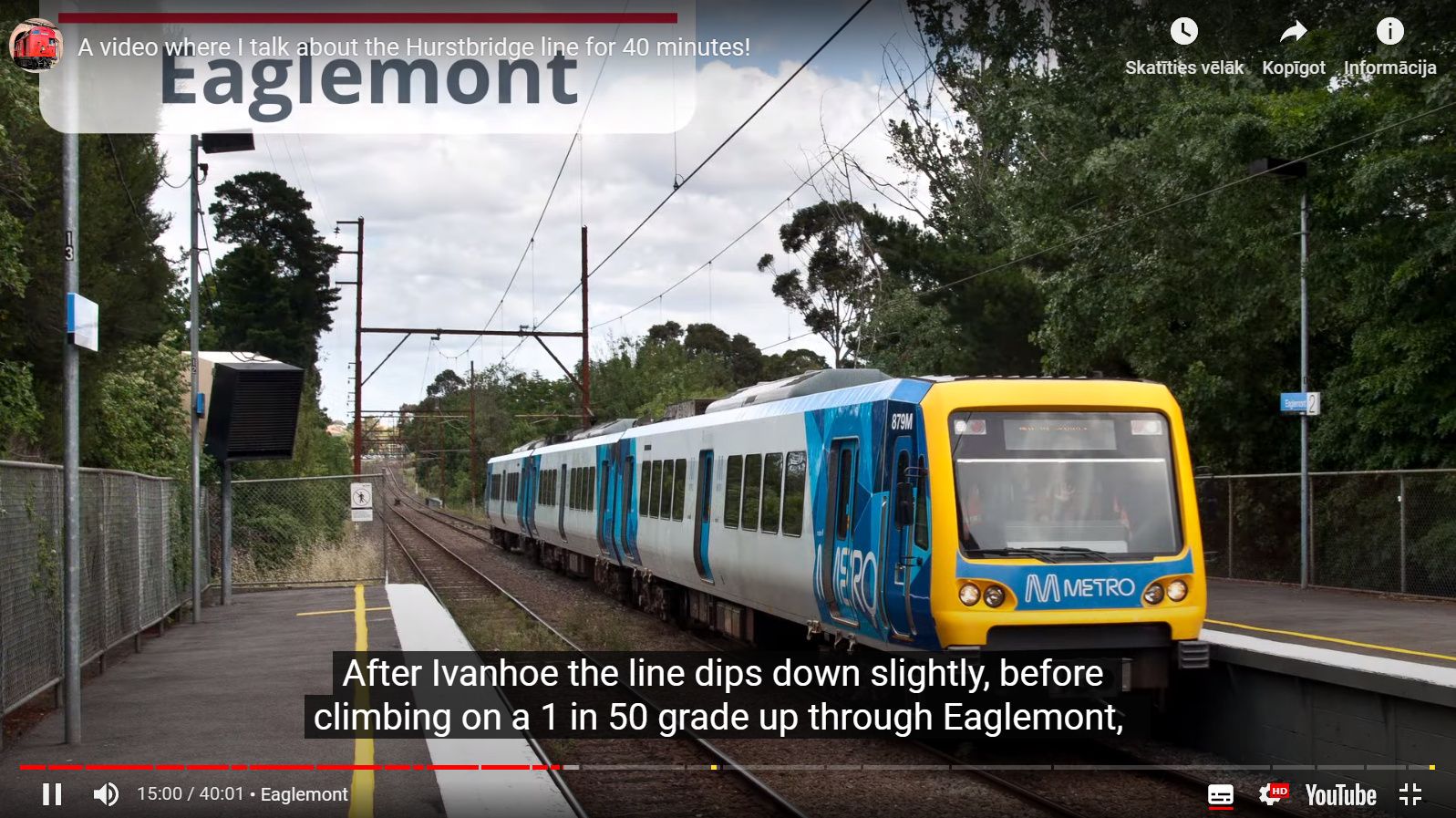
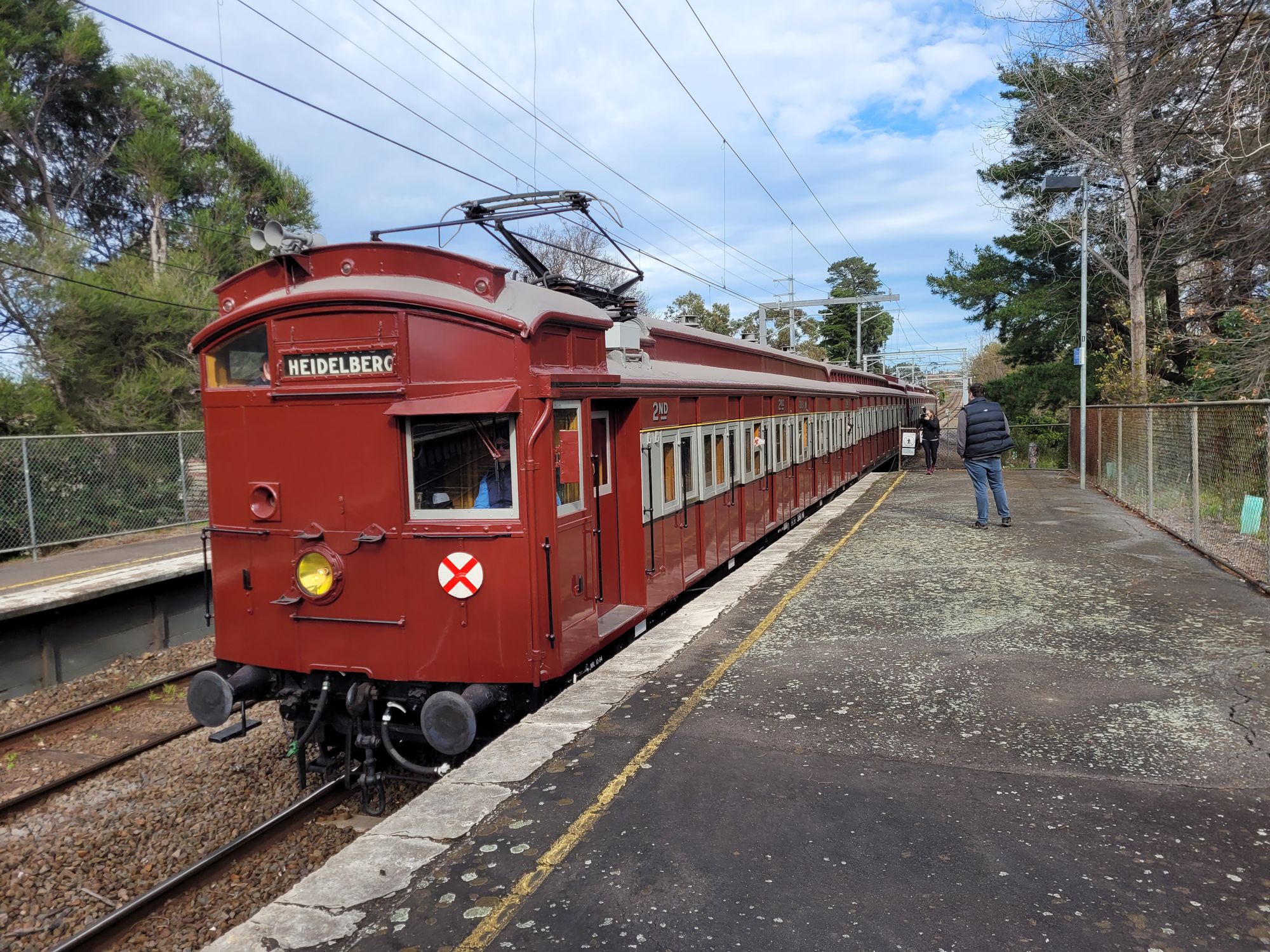

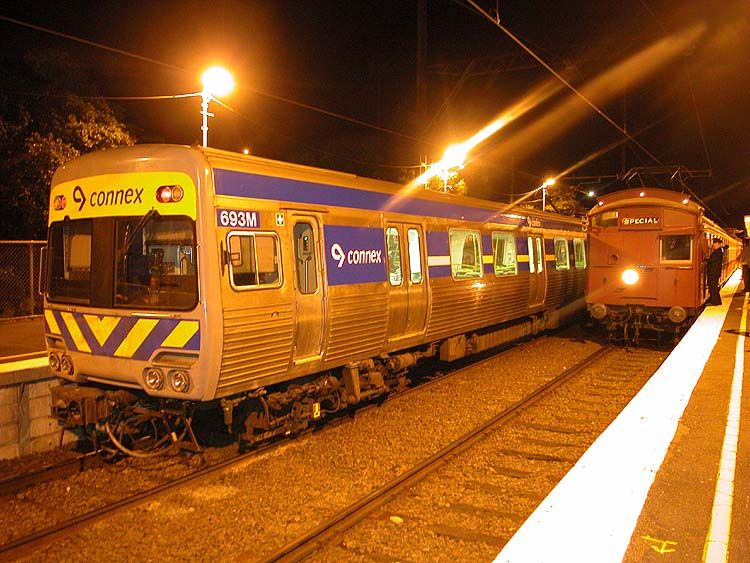
Within 2 months the design deficiencies of the overhead electricity supply system became apparent.
The Age, 24.09.1921, Page 14
ELECTRIC TRAIN MISHAP.
Heidelberg Traffic Delayed.
Overhead Wires Disarranged.
Owing to a mishap on the recently electrified railway line to Heidelberg, traffic on that line was suspended for a time yesterday. A train from Flinders-street to Heidelberg about 1.35 p.m. was passing in the vicinity of Alphington station, when the pantograph — the gear on the top of the motor carriage which makes contact with the lower of the two live wires— fouled the wire overhead. The wire was dragged out of place, and the electric service was put out of gear.
According to information available at the railway office, the accident was due in the first place to the strong wind blowing. Apparently the overhead wires in an exposed position had been caused to sway in the wind to such an extent that the pantograph of the train had caught on top of the wire, dragging it out of place and bringing it down on the ground, after the connections with the higher wire had been broken. No one was injured by the falling live wire, and the train also, it was stated, escaped damage. The current was switched off without delay, and gangs were sent to work on the line. An emergency steam train service was put into operation until the reopening of the electric service during the evening.
Discussing the accident yesterday, a responsible railway official said that it might be deemed advisable to place additional stays on the overhead wires in exposed positions, such as portions of the Heidelberg line. A certain amount of swaying was inevitable.
Traffic on the Melbourne side of Clifton Hill to Preston and North Carlton was not affected by the mishap.
(Nilss, who supplied the reference, writes: "I would be thrilled about an emergency steam train service instead of replacement buses in 2023... A few weeks ago a steam locomotive pulled a disabled “Zillertalbahn“ diesel passenger train back to the depot in the Ziller valley (Austria).)
And of course this brings us to the saga of the Eaglemont Sub-station, the lies spun to residents by the Level Crossing Removal Authority and the North East Project Alliance they spawned, the desperate dash by Mary V and me to comprehend 1500 DC motive power supply intricacies, the blockading of the Sub-station work site from 5 a.m. .........

But that is a story for another day.
Member discussion